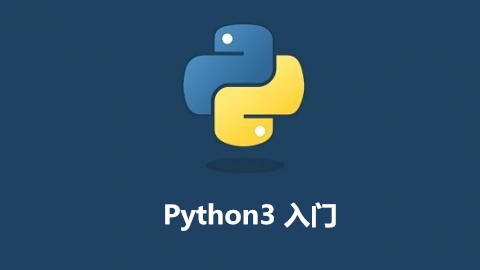if
奇数 1分钟:
>>> a=range(10)
>>> a
[0, 1, 2, 3, 4, 5, 6, 7, 8, 9]
>>> n=0
>>> while n<len(a):
... if n%2==1:
... print a[n]
... n+=1
>>> n=0
>>> while n<len(a):
... if n%2==1:
... print a[n]
... n+=1
n=0
>>> a="abcefghijk"
>>> while n<len(a):
... if n%2==1:
... print a[n]
... n+=1
int i
>>> while i <= 10:
... if i %2 != 0:
... print i
... i += 1
>>>
>> a =" 1 2 3 4 5 6 7 8 9 0"
>>> a1 = a.split()
>>> a1
['1', '2', '3', '4', '5', '6', '7', '8', '9', '0']
确定是否是fals
查找一句中有多少字母
s = “I am a boy”
>>> count=0
>>> word_list=s.split()
>>> word_list
['I', 'am', 'a', 'boy!']
>>> for i in word_list:
... if 'a' in i:
... count+=1
...
>>> print count
ncount = 0
s = 'I ama aa boy'
s_list = s.split()
print s_list
for i in range(len(s)):
print s[i]
if s[i] == 'a':
ncount += 1
print 'how many words :%s'%ncount
统计长度
>>> print len(word_list)
4
>>> len("abc")
3
>>> len({1:2})
死循环
while True:
pass
遍历
>>> for i in range(1,11,2):
... print i
>>> for i in range(1,11,2):
... print i >>> s="abcedfg"
>>> for i in range(len(s)):
... print s[i]
质数
>>> 方法1:使用2-到它本身之间的所有数做除法,没有发生整除,则就是质数
方法2:使用2-到它本身平方根之间的所有数做除法,没有发生整除,则就是质数
#encoding=utf-8
import math
number=int(raw_input("input a number:"))
for i in range(2,int(math.sqrt(number)+1)):
if number %i ==0:
print "%s is not prime number " %number
break
else:
print "%s is prime number " %number
小题
a=[1,2,3,4,5,(1,2),(5,6)]
>>> for i in a:
... if isinstance(i,(list,tuple)):
... for j in i:
... print j
... else:
... print i
for
>>> for i in range(5):
... print i
... else:
... print "no break happens!"
...
>>> for i in range(5):
... print i
... break
... else:
... print "no break happens!"
...
0
while
>>> n=2
>>> while n>=2:
... n-=1
... else:
... print "no break happens"
...
no break happens
习题
>>> for i in range(1,5):
... for j in range(1,6):
... print int(str(i)+str(j))
>>> exec("print 'hello'")
hello
>>> eval("2*4")
8
Pass 和是否可迭代
from collections import Iterable
print isinstance('abc',Iterable)
True
退出多重循环方法:
class getoutofloop(Exception): pass
try:
for i in range(5):
for j in range(5):
for k in range(5):
if i == j == k == 3:
raise getoutofloop()
else:
print i, '----', j, '----', k
except getoutofloop:
pass
def test():
for i in range(5):
for j in range(5):
for k in range(5):
if i == j == k == 3:
return
else:
print i, '----', j, '----', k
test()
作业一去重:使用尽可能多的方法实现list去重
>>> set([1,1,1,2,2,3,3])
set([1, 2, 3])
>>> list(set([1,1,1,2,2,3,3]))
[1, 2, 3]
>>>
>>> d={}
>>> a=[1,1,1,2,2]
>>> for i in a:
... d[i]=None
...
>>> print d.keys()
[1, 2]
算法:
1 声明一个新的list
2 把原list中的元素进行遍历,尝试放入到新list中
3 如果要放入的元素已经在新list中存在了,就不再次放入了,否则就放入
4 打印新list的内容
a=[1,1,2,2,2,2,3,3]
for i in a:
for j in range(a.count(i)-1):
a.remove(i)
print a
七种方式去重
# #coding=utf-8
import time
time_start=time.time()
print u"列表去重的七种方法"
print u"第一种测试方法"
repeat_list=[1,2,4,1,5,1,2,5]
result=[]
for i in repeat_list:
if i not in result:
result.append(i)
print u"第一种去重结果: ",result
print u"第二种测试方法"
repeat_list=[1,2,4,1,5,1,2,5]
result={}
print u"第二种去重结果: ",list(result.fromkeys(repeat_list))
print u"第三种测试方法"
repeat_list=[1,2,4,1,5,1,2,5]
print u"第三种去重结果: ",list(set(repeat_list))
print u"第四种测试方法"
repeat_list=[1,2,4,1,5,1,2,5]
import itertools
def test_groupby(x):
if x==1:
print "lower"
elif x>1 and x<4:
print "middle"
elif x>=4:
print "higher"
repeat_list=sorted(repeat_list)
data=itertools.groupby(repeat_list,key=test_groupby)
for i,j in data:
print list(j)
data=itertools.groupby(repeat_list)
result=[]
for i,j in data:
result.append(i)
print u"第四种去重结果: ",result
print u"第五种测试方法"
repeat_list=[1,2,4,1,5,1,2,5]
for i in [j for j in repeat_list if repeat_list.count(i)>1]:
for x in range(repeat_list.count(i)-1):
repeat_list.remove(i)
print u"第五种去重结果: ",repeat_list
print u"第六种测试方法"
repeat_list=[1,2,4,1,5,1,2,5]
i=0
while i<=len(repeat_list)-1:
if repeat_list.count(repeat_list[i])>1:
repeat_list.pop(i)
else:
i+=1
print u"第六种去重结果: ",repeat_list
print u"第七种测试方法"
repeat_list=[1,2,4,1,5,1,2,5]
func=lambda x,y:x if y in x else x + [y]
print u"第七种去重结果: ",reduce(func,[[],]+repeat_list)
print "_"*20
print u"去重程序耗时%f" % (time.time()-time_start)
print "_"*20
time.sleep(3)
Testing started at 17:38 ...
列表去重的七种方法
第一种测试方法
第一种去重结果: [1, 2, 4, 5]
第二种测试方法
第二种去重结果: [1, 2, 4, 5]
第三种测试方法
第三种去重结果: [1, 2, 4, 5]
第四种测试方法
lower
lower
lower
middle
middle
higher
higher
higher
[1, 1, 1, 2, 2, 4, 5, 5]
第四种去重结果: [1, 2, 4, 5]
第五种测试方法
第五种去重结果: [4, 1, 2, 5]
第六种测试方法
第六种去重结果: [4, 1, 2, 5]
第七种测试方法
第七种去重结果: [1, 2, 4, 5]
____________________
去重程序耗时0.001000
____________________
=================
Process finished with exit code 0
Empty test suite.
3.实现数学中多项式求和公式的打印
result=[]
for i in range(6,-1,-1):
if i == 0:
result.append("a0")
break
result.append("a%sx^%s" %(i,i))
print "+".join(result
转换:
>>> "*".join(["1","2","3"]).split()
['1*2*3']
>>> "*".join(["1","2","3"]).split('*')
['1', '2', '3']
统计名字列表中,各名字的首字母在名字列表中出现的次数
第一种
name_list=['foster',"janet",'jessus','david']
count_dict={}
for i in name_list:
count_dict[i]="".join(name_list).count(i[0])
print count_dict
第二种方法
name_list=['foster',"janet",'jessus','david']
count_dict={}
for i in name_list:
count=0
for j in name_list:
if j.count(i[0])>=1:
count+=j.count(i[0])
count_dict[i]=count
print count_dict
输入三个数,判断是否能构成三角形
import math
a,b,c=input("please input three num a,b,c:")
d=min(a,b,c)
e=max(a,b,c)
if d<=0:
print "error"
elif (a+b+c)>2*e:
print U"能组成三角形"
else:
print u"不能组成三角形" 输入三个数,判断是否能构成三角形
能构成三角形三边关系:
三边都大于零
两边之和大于第三边,两边之差小于第三边

 随时随地看视频
随时随地看视频




